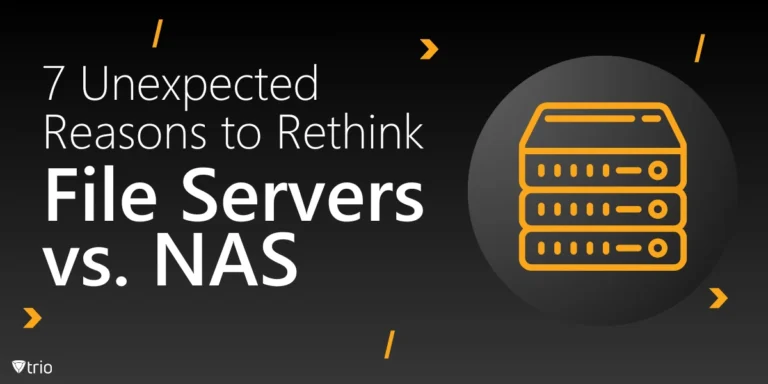In an age where cybersecurity threats evolve at breakneck speed, organizations must constantly innovate to protect digital systems. Google has again demonstrated its leadership in cybersecurity by uncovering significant vulnerabilities using artificial intelligence (AI). This achievement showcases the potential of automated tools to identify long-hidden security flaws that could pose risks to global digital infrastructure.
This blog examines Google’s recent discoveries, highlights the role of AI in cybersecurity, and considers the broader implications for protecting critical systems.
How Google Uncovered Critical Vulnerabilities
Understanding the methods and tools behind Google’s recent discoveries provides a glimpse into the future of cybersecurity. Google’s OSS-Fuzz team has been pivotal in identifying flaws in open-source software. Their latest findings highlight the strength of combining traditional testing with cutting-edge AI.
The Role of Google’s OSS-Fuzz Team
Google’s OSS-Fuzz team focuses on detecting vulnerabilities in open-source software using advanced fuzz testing techniques. Fuzzing involves testing software by providing unexpected inputs to identify weak points. While the method itself is not new, integrating AI has elevated its effectiveness.
Recently, this team identified 26 vulnerabilities in open-source projects, including one in the widely-used OpenSSL Library, classified as CVE-2024-9143. OpenSSL is essential for securing internet communications, playing a role in everything from encrypted websites to secure online banking.
The Significance of CVE-2024-9143
The CVE-2024-9143 vulnerability involves a memory-handling issue that could cause severe problems, such as application crashes or unauthorized remote access. This flaw remained undetected for nearly two decades due to its subtlety, escaping traditional testing methods. The risks associated with exploiting such vulnerabilities are serious:
- Service Interruptions: Applications relying on OpenSSL could fail, disrupting operations.
- Data Exposure: Breached systems could lead to sensitive information being compromised.
- System Breaches: Attackers might exploit the vulnerability to gain unauthorized control of systems.
The discovery underscores the ability of AI-driven tools to identify complex vulnerabilities that might otherwise go unnoticed.
What Makes AI-Powered Fuzzing Different?
AI-powered fuzzing represents a significant leap forward in vulnerability detection. To appreciate its advantages, it’s essential to first understand how traditional fuzzing works and the challenges it faces.
Traditional Fuzzing vs. AI-Powered Fuzzing
Traditional fuzzing relies on developers to create fuzz targets—specific sections of code designed to test software for weak spots. While effective, this manual process requires time and creativity, limiting its scalability.
AI-powered fuzzing changes the dynamic. By using large language models (LLMs), AI generates fuzz targets automatically, reducing time spent and increasing testing coverage. This approach uncovers vulnerabilities more comprehensively, including those that might have been overlooked by conventional methods.
Automation in Security Testing
The ultimate goal of AI-powered fuzzing is full automation. Instead of relying on human developers to build fuzz targets, AI performs the task with greater speed and consistency. Automation is particularly valuable as modern software grows increasingly complex, making manual testing methods inefficient.
Steps involved in AI-powered fuzzing:
- Creating Targets: AI generates precise targets to test specific functions or sections of code.
- Executing Tests: These targets are used in fuzz testing to expose vulnerabilities.
- Documenting Issues: Any detected flaws are reported to developers for resolution.
Broader Implications of AI in Cybersecurity
The application of AI in cybersecurity is a game-changer. Beyond improving existing processes, it opens doors to new ways of addressing threats. The implications of AI’s integration extend across industries and user groups.
Moving from Reaction to Prevention
AI’s ability to detect flaws before they are exploited represents a shift from reactive to preventive cybersecurity. Organizations can now address potential risks in advance, reducing the chances of successful attacks. This approach minimizes the damage that could result from undetected vulnerabilities.
Benefits for Open-Source Projects
Open-source software underpins much of today’s digital infrastructure. While widely used, it can be more vulnerable due to its public nature and reliance on volunteer developers. Tools like OSS-Fuzz provide essential support by identifying weaknesses that might otherwise remain hidden. AI-driven automation ensures that even small projects benefit from improved security.
Why the OpenSSL Vulnerability is a Wake-Up Call
OpenSSL is a cornerstone of internet security, relied on by countless applications and systems worldwide. The discovery of a significant flaw in its code is a stark reminder of the risks inherent in complex software. This case serves as a powerful example of why robust testing and vigilance are essential.
The Widespread Use of OpenSSL
OpenSSL plays a crucial role in securing internet communications. Its encryption safeguards sensitive data, making it indispensable for everything from e-commerce platforms to enterprise applications. A flaw in such a widely-used tool has far-reaching consequences, potentially affecting millions of users and organizations.
Takeaways for Developers and Organizations
The discovery of CVE-2024-9143 highlights the need for comprehensive security measures. Developers and organizations should prioritize:
- Timely Updates: Regularly updating software to incorporate the latest security fixes.
- Advanced Tools: Leveraging AI-driven tools for more effective vulnerability detection.
- Community Collaboration: Participating in initiatives like OSS-Fuzz to strengthen shared digital infrastructure.
Expanding the Role of AI in Cybersecurity
As cybersecurity threats grow more sophisticated, AI’s role in countering them continues to expand. Beyond its current applications, AI offers immense potential for reshaping how threats are detected and addressed across diverse scenarios.
Beyond Detecting Vulnerabilities
AI’s contributions to cybersecurity extend far beyond finding flaws in code. The global AI in cybersecurity market is projected to grow from approximately $24 billion in 2023 to around $134 billion by 2030. Potential applications include:
- Pattern Analysis: Identifying suspicious activity that might indicate an ongoing attack.
- Global Threat Monitoring: Analyzing large datasets to predict and respond to new risks.
- Incident Automation: Quickly addressing breaches to contain damage.
Challenges to Address
While AI offers transformative potential, it also presents challenges:
- Precision: Ensuring models detect real threats without raising false alarms.
- Integration: Implementing AI tools into existing workflows without disrupting operations.
- Ethics: Balancing powerful capabilities with responsible use.
The Future of AI in Cybersecurity
Artificial intelligence is reshaping how organizations defend against digital threats. As this technology advances, its impact on security strategies will only grow. However, this evolution brings both opportunities and challenges that demand careful consideration.
Advancements in AI for Threat Detection
AI systems excel at processing large volumes of data to identify potential security risks. By analyzing patterns in network traffic, user behavior, and system logs, these tools can detect anomalies that suggest malicious activities. Early identification of threats is key to reducing their impact, and AI provides an effective way to achieve this.
AI in Incident Response
The role of AI extends beyond threat detection. Automated systems can act swiftly during an attack, isolating compromised components, initiating security protocols, and even resolving minor issues without human intervention. This speed is essential for minimizing disruption and damage.
Challenges in AI Integration
Despite its potential, integrating AI into cybersecurity strategies comes with obstacles:
- Data Accuracy: AI models depend on clean, accurate data. Poor-quality data can lead to errors, diminishing the system’s reliability.
- Complex Implementation: Deploying AI systems requires technical expertise and infrastructure that some organizations may find challenging to establish.
- Ethical Questions: The use of AI in cybersecurity raises concerns about privacy, decision-making transparency, and accountability.
Human Expertise Remains Essential
While AI is powerful, it cannot fully replace the judgment of skilled cybersecurity professionals. Human experts interpret AI findings, provide context, and make strategic decisions that go beyond what automated systems can offer. Combining AI tools with human insight creates a balanced approach to security.
Preparing for an AI-Driven Cybersecurity Landscape
Organizations aiming to adopt AI in their security frameworks must take proactive measures to ensure success.
Focusing on Education
Staff training is a vital component of integrating AI into cybersecurity efforts. Employees should understand how to use AI tools effectively and grasp the ethical considerations surrounding their application. This knowledge empowers teams to maximize the technology’s benefits while mitigating potential downsides.
Establishing Clear Guidelines
Defining policies for AI usage helps organizations use these tools responsibly. Guidelines should cover how data is handled, how decisions are made, and who is accountable for the system’s actions. Transparency in these policies builds trust within teams and with stakeholders.
Engaging with the Cybersecurity Community
Collaborating with peers and participating in global security initiatives strengthens defenses. For example, projects like Google’s OSS-Fuzz show the importance of collective efforts to address shared challenges. Organizations that contribute to such initiatives also benefit from shared knowledge and tools.
Building a Collaborative Future for Cybersecurity
The increasing complexity of cybersecurity challenges requires a collective approach. While individual organizations play a vital role in safeguarding their systems, collaboration across industries and sectors is essential to address the growing threat landscape effectively.
Open-Source Initiatives as a Pillar of Defense
Projects like Google’s OSS-Fuzz exemplify the power of open-source collaboration. These initiatives bring together developers, researchers, and security professionals to identify and address vulnerabilities in widely used software. Open-source projects benefit from diverse expertise and resources, leading to quicker identification of threats and faster implementation of fixes.
Organizations can contribute to these efforts by:
- Sharing knowledge about emerging threats and vulnerabilities.
- Offering resources to support testing and research.
- Encouraging their developers to participate in global security projects.
Policy and Regulation for AI in Cybersecurity
The growing use of AI in security raises the need for clear policies and regulations. Governments and industry leaders must work together to establish guidelines that promote responsible AI development while addressing risks. Regulations can ensure transparency, fairness, and accountability in the deployment of AI-powered security systems.
Key considerations for such policies include:
- Defining ethical boundaries for AI applications.
- Encouraging transparency in decision-making algorithms.
- Creating standards for data privacy and security.
The Role of Knowledge Sharing
Cybersecurity is not a zero-sum game; the success of one organization contributes to the overall safety of the digital ecosystem. Knowledge sharing, through conferences, research publications, and collaborative platforms, fosters innovation and helps combat common threats. Organizations that actively engage in these exchanges position themselves as leaders in cybersecurity, enhancing their reputation while contributing to collective resilience.
Conclusion
Google’s recent discovery of hidden vulnerabilities using AI illustrates how this technology is transforming cybersecurity. By automating complex processes and identifying risks that traditional methods miss, AI offers organizations a chance to strengthen their defenses. However, its integration must be approached thoughtfully, with careful attention to ethical considerations, proper training, and the ongoing involvement of human expertise.
As threats become more sophisticated, the combination of AI and human judgment will shape the future of cybersecurity, ensuring that organizations remain equipped to protect their systems and users from evolving risks.








